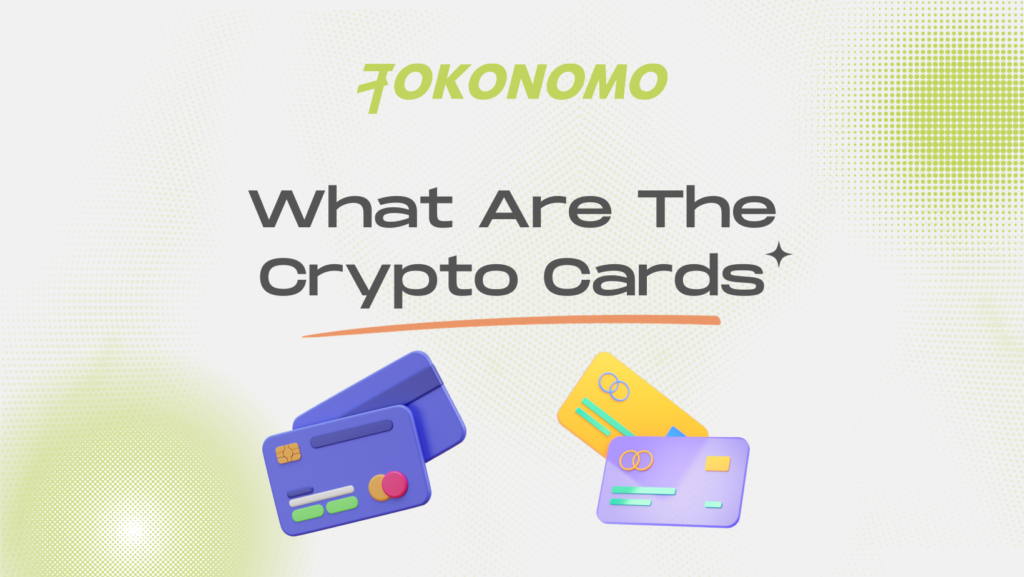In recent years, the world of cryptocurrencies has gained significant attention and popularity. With the rise of digital currencies such as Bitcoin and Ethereum, individuals are constantly exploring new ways to maximize their investments and enhance their overall cryptocurrency experience. One such innovation that has emerged is the concept of crypto cards.
What Does the Term ‘Crypto Card’ Mean?
A cryptocurrency card works like a regular debit card. You can use it to buy things at places that accept the card. But it may seem like you’re using digital currency when you’re using regular money. When you make a payment, the seller gets regular money, not digital currency. Your cryptocurrency card takes money from your linked account, converts it to regular money, and uses that to pay. We’ll show you an example later.


Visa and MasterCard both have partners that offer cryptocurrency cards, which are widely accepted by retailers all over the world. Some of these cards offer rewards in cryptocurrency for purchases made using the card. To sign up for these credit cards, a credit check is usually required.
What Is the Functioning Mechanism of a Cryptocurrency Card?
As previously mentioned, a cryptocurrency card does not directly settle payments with the vendor using cryptocurrency. Instead, it offers the convenience of converting your cryptocurrency into traditional cash, which can then be utilized for transactions with the vendor through the card.
For instance, consider a scenario in which you hold $500 worth of Binance Coin (BNB) in the Funding Wallet of your Binance Card. Suppose you dine at a restaurant and wish to pay a $100 bill using your cryptocurrency card. Upon inserting your card and confirming the payment, Binance initiates the sale of $100 worth of BNB and loads the equivalent fiat currency onto the card. Consequently, the restaurant receives the $100 payment, leaving you with a balance of $400 worth of BNB in your Funding Wallet. This entire process unfolds in just a matter of seconds when utilizing your cryptocurrency card.
Furthermore, if your service provider supports it, you can employ cryptocurrency cards to make ATM withdrawals. The same procedure mentioned earlier is employed to access physical cash through these withdrawals.
How Do Crypto Cards Differ From Credit or Debit Cards?
There exist some slight distinctions between credit and debit cards in comparison to crypto cards. In general, their functioning is quite similar, particularly when it pertains to making payments. Nonetheless, the most prominent disparity between a crypto card and a credit or debit card revolves around how you fund them. With a standard crypto card, you load it up with cryptocurrencies, while a debit card is initially pre-loaded with fiat currencies, and a credit card’s transactions are settled later in fiat currency.
In the case of a prepaid crypto card, its operation closely resembles that of a conventional debit card. It necessitates that you have sufficient funds in your account before you can spend them, and you are exclusively able to load your card with cryptocurrencies, not fiat cash. When a payment is made, your funds are swiftly converted to your crypto wallet.


On the flip side, Crypto credit cards offer a credit line extension, permitting you to make immediate purchases and settle the dues at a later time. Notably, Gemini and BlockFi have both introduced crypto credit cards that offer crypto cashback as an incentive. The credit card bill is to be paid in regular fiat currency, effectively rendering the crypto credit card akin to a rewards credit card.
To acquire such a card, you must already be a customer of a company that offers crypto cards, such as a crypto exchange or a crypto-friendly bank that supports crypto transactions. The process entails completing Know Your Customer (KYC) and Anti-Money Laundering (AML) procedures, mirroring the requirements for obtaining a standard credit or debit card. Additionally, in the case of a crypto credit card, a credit check is also mandatory.
What Advantages Come With the Using of a Cryptocurrency Card?
The primary advantage of utilizing a prepaid crypto card lies in its capacity to facilitate the utilization of your cryptocurrency for everyday expenditures, a feat that has conventionally proven to be quite challenging unless the vendor explicitly embraces cryptocurrency transactions. Moreover, when dealing with specific cryptocurrencies such as Bitcoin, there can be a considerable delay of up to 30 minutes for transaction confirmation, adding an element of uncertainty to the process. Additionally, it’s worth noting that the cryptocurrency market is characterized by its inherent volatility, which implies that the actual amount you spend may deviate from your initial expectations.
Furthermore, many crypto cards also offer enticing perks like cashback rewards or discounted access to popular subscriptions such as Spotify or Netflix. These advantages act as a draw towards particular card providers and bear similarities to the benefits commonly associated with standard debit and credit cards. It is prudent to diligently compare the offerings of each card to identify the most suitable benefits for your unique needs. Also, be vigilant about potential exchange fees that might be incurred during the currency conversion process.
Are There Any Potential Risks Associated With Crypto Cards?
Owning a crypto card comes with the same level of risk as holding cryptocurrency itself. When you’ve loaded your account with Bitcoin (BTC) or Ether (ETH), you should be aware that the fiat value of your account will constantly fluctuate. Consequently, your account balance may not align precisely with your expectations, depending on prevailing exchange rates.
It’s essential to keep in mind that in many tax jurisdictions, utilizing cryptocurrency for purchases constitutes a taxable event. This applies regardless of whether you’re spending a modest amount on a cup of coffee or a substantial sum on a vehicle. If you’ve experienced any gains or losses on your cryptocurrency holdings prior to making a purchase with your crypto card, you’ll be required to settle the appropriate taxable amount or declare the necessary deductions.
To circumvent this issue, one effective strategy is to acquire stablecoins for use with your crypto card, as their value rarely deviates significantly from their fixed pegged value.
Conclusion
If you find yourself with crypto holdings you no longer wish to HODL, consider utilizing a crypto card to streamline the process of converting your digital assets into fiat currency. Without the convenience of a crypto card, you would typically be required to navigate the conversion procedure and initiate a manual transfer of the fiat funds to your bank account. This manual transfer can be a time-consuming process, potentially spanning several days, contingent upon the policies of your bank and the cryptocurrency exchange you use. Embracing a crypto card truly represents one of the swiftest methods to leverage your crypto assets for making purchases, marking a noteworthy advancement in the world of digital finance. Nevertheless, it remains imperative to maintain detailed records of your expenditures for taxation purposes.











